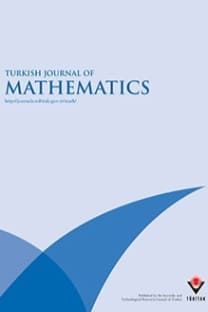A new method for obtaining the inconsistent elements in a decision table based on dominance principle
In this study, using only the dominance relation, we propose a set defining inconsistent elements in the decision table. Then, we show the accuracy of our proposition with an example. We also express the computational complexity comparisons of the proposed method with general method in terms of the number of set intersection operations and the real number comparison operations.
Keywords:
Rough sets dominance relation, inconsistent element, decision table,
___
- [1] Greco S, Matarazzo B, Slowinski R. Multicriteria classification by dominance-based rough set approach. Università degli studi, 2000.
- [2] Greco S, Matarazzo B, Slowinski R. Rough sets theory for multicriteria decision analysis. European Journal of Operational Research 2001; 129: 1-47.
- [3] Greco S, Matarazzo B, Slowinski R. Rough approximation by dominance relations. International Journals of Intelligent Systems 2002; 17 (2): 153-171.
- [4] Janos D, Thi VD, Giang NL. On finding all reducts of consistent decision tables. Cybernetics and Information Technologies 2014; 14 (4): 3-10.
- [5] Kacprzyk J, Pedrycz W. (Eds.). Springer Handbook of Computational Intelligence. New York, USA: Springer, 2015.
- [6] Liou, JJ, Tzeng GH. A dominance-based rough set approach to customer behavior in the airline market. Information Sciences 2010; 180 (11): 2230-2238.
- [7] Molodtsov D. Soft set theory-first results. Computers & Mathematics with Applications 1999; 37 (4-5): 19-31.
- [8] Pawlak Z. Rough set. International Journal of Computer & Information Sciences 1982; 11 (5): 341-356.
- [9] Pawlak Z, Skowron A. Rough membership functions: a tool for reasoning with uncertainty. Algebraic Methods in Logic and in Computer Science 1993; Banach Center Publications, 28, institute of mathematics polish academy of sciences warszawa, 135-150.
- [10] Salama, AS. Some topological properties of rough sets with tools for data mining. International Journal of Computer Science Issues (IJCSI) 2011; 8(3): 588-594.
- [11] Słowiński R, Stefanowski J, Greco S, Matarazzo B. Rough set based processing of inconsistent information in decision analysis. Control and Cybernetics 2000; 29 (1): 379-404.
- [12] Yang X, Yang J. Incomplete information system and rough set theory. Models and attribute reductions. Science Press: Springer, 2012.
- [13] Zadeh LA. Fuzzy sets. Information and Control 1965; 8 (3): 338-353.
- [14] Zaras K. The dominance-based rough set approach (DRSA) applied to bankruptcy prediction modeling for small and medium businesses. Multiple Criteria Decision Making 2011; 287-295.
- ISSN: 1300-0098
- Yayın Aralığı: Yılda 6 Sayı
- Yayıncı: TÜBİTAK
Sayıdaki Diğer Makaleler
Yong Sup KIM, Arjunkumar RATHIE, Rıchard B. PARIS
Ahmet TOPAL, Yasemen UÇAN, Nilgün GÜLER BAYAZIT
Prolongations of isometric actions to vector bundles
Anahı ROJAS, Franco BARRAGAN, Sergıo MACÍAS
Higher-order Sturm–Liouville problems with the same eigenvalues
Farıborz AZARPANAH, Delavar ESMAEILVANDI
Conceptions on topological transitivity in products and symmetric products
Sergio MACÍAS, Franco BARRAGAN, Anahi ROJAS
